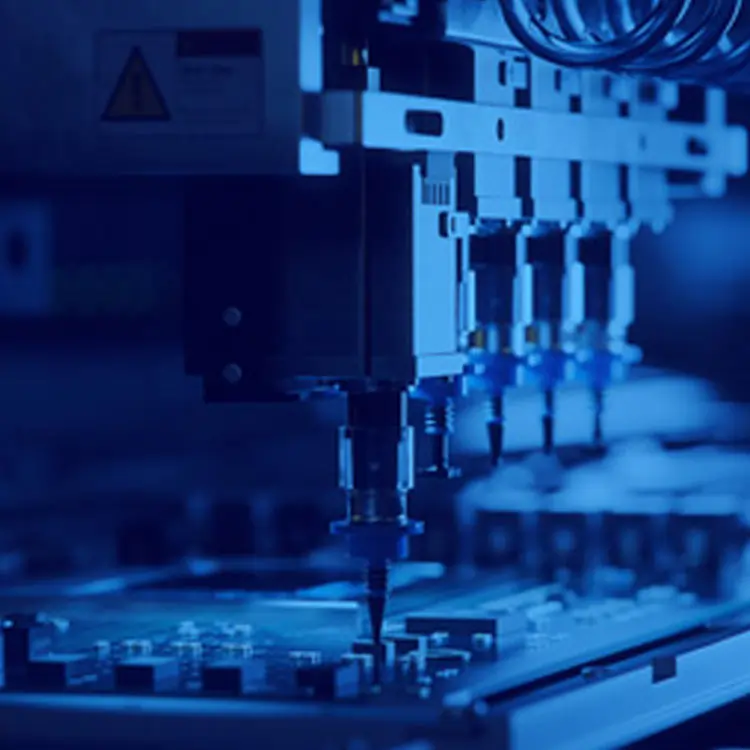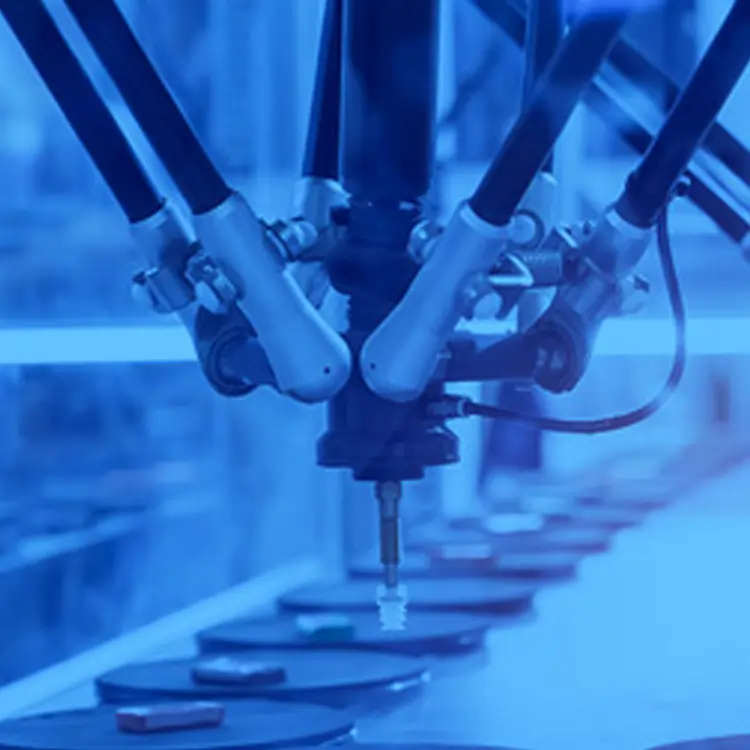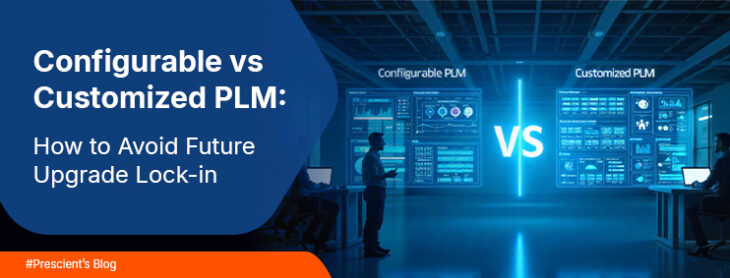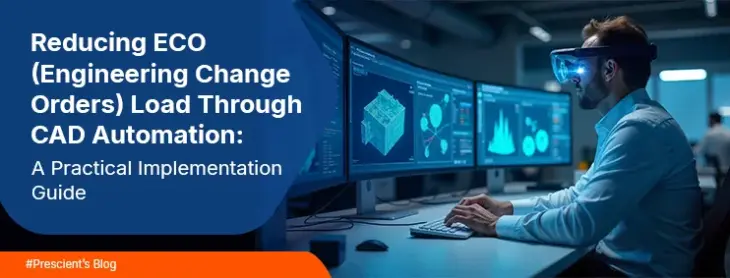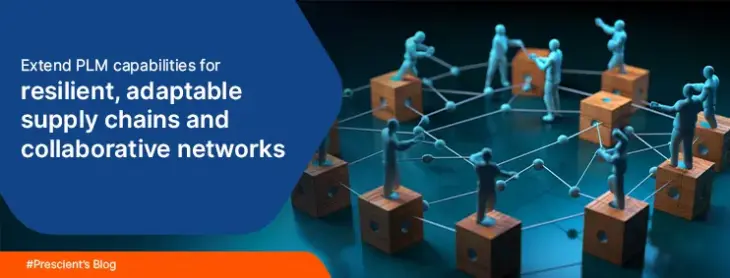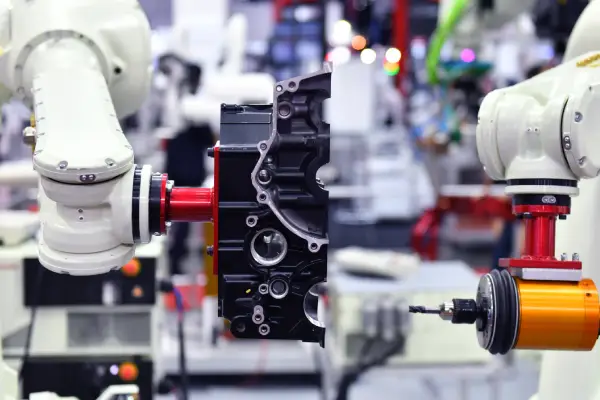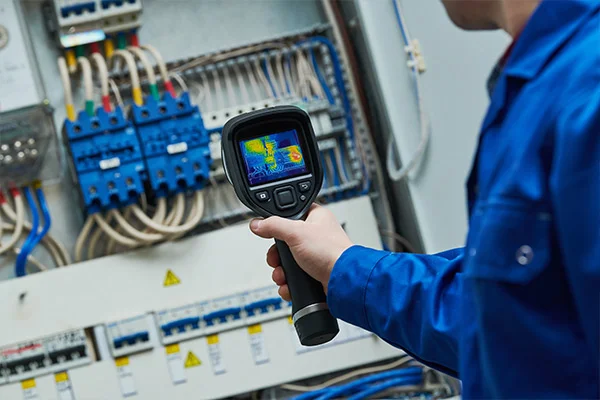Vision Based Inspection
The Power of Vision-Based Solutions in Manufacturing by Prescient Technologies
Features Of The EMIS
Features Of The EMIS

Web-based Platform
Our Digital Logbook is accessible anytime, anywhere. Whether you prefer on- premises or cloud deployment, our platform provides the flexibility to suitHighlighting how Digital Thread saves time and resources by eliminating manual data entry and transfer, allowing employees to focus on more value-added tasks your specific needs.

Customizable Checklists
Tailor your checklists to fit your unique requirements. With our platform, you can easily create and configure checklists, define the order of checklist items, and provide additional instructions for each step.
Benefits of EMIS

Digital Logbook Operation Rules
Functional Administrator
- Defines production lines and workshops
- Defines systems users and roles
- Configures different masters and checklists
Operator
- Views schedule
- Files checklist
- Views filled checklist
Line Incharge
- Approves filled check by operator
- Files checklist for production lines
- Monitors summary and reports
- Defines checklist-schedule for workstations
Process Incharge
- Configures different masters and checklist.
- Defines checklist-schedules.
- Files checklist for plant if applicable.
- Monitors reports and expectations from filled checklist.
Digital Logbook Implementation
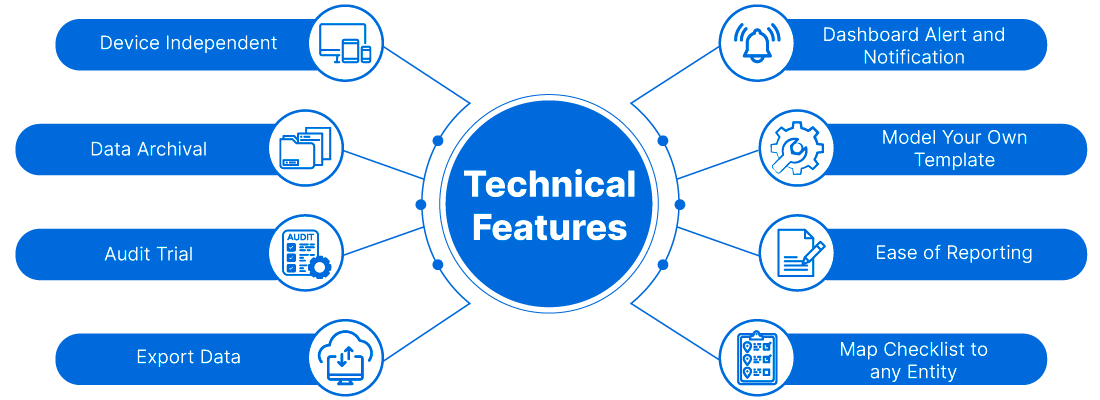
EMIS Implementation
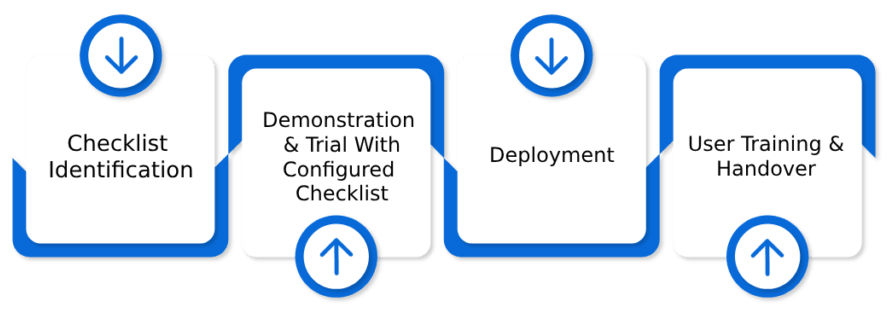
Our Services
Our Services

Part Segregation
Utilise our Intelligent Sensing Technology Platform for precise part segregation. Employ advanced sensors such as CCTV, Laser Scanners, GPS, BLE, and UWB. Achieve streamlined operations, reduced waste, and enhanced quality control.

Defect Detection
Leverage our Intelligent Sensing Technology Platform for reliable defect detection. Utilise advanced sensors and real-time data analysis for accurate results. Prevent costly product recalls, reduce rework, and improve customer satisfaction.

End of Line Inspection
Ensure the highest quality standards with our comprehensive end of line inspection. Integrate our Intelligent Sensing Technology Platform for meticulous examination. Verify critical parameters, identify anomalies, and ensure regulatory compliance.

Dimension Inspection
Optimise 3D printing processes with our in-situ inspection services. Monitor and control the printing process in real-time using advanced sensors. Detect errors early, minimize material waste, and accelerate time-to-market.

Request a Quote Today
Schedule Free Consultation Today
Our Intelligent Sensing Technology Platform

Developed by Prescient Technologies to unleash the full potential of vision based inspection
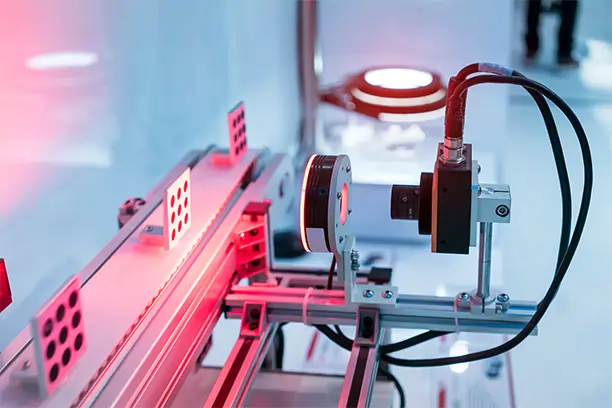
Integrates advanced sensors like CCTV, Laser Scanners, GPS, BLE, and UWB

Enables real-time data collection, high accuracy, and scalable solutions
Vision Based Inspection in Different Industries
Manufacturing
Finds surface defects, assembly errors, and misaligned parts.
Electronics
Inspects circuit boards, solder joints, and semiconductor wafers.
Automotive
Detects paint flaws, scratches, and structural issues.
Pharmaceuticals
Checks packaging, labels, and tablet quality.
Why Choose
Prescient Technologies?
-
Expertise in Engineering Process Automation
-
Successful Implementations
-
Seamless Integration and Support
-
Measurable Results

Why Choose Prescient Technologies?

Expertise and Experience
With years of industry expertise, we have a deep understanding of energy management challenges and solutions.
Cutting-Edge Technology
Our EMIS leverages the latest advancements in data analytics, machine learning, and IoT technologies to deliver optimal results.
Customized Solutions
We tailor our EMIS to fit your organization's unique requirements, ensuring a solution that aligns perfectly with your goals.
Dedicated Support
Our team is committed to your success. From implementation to ongoing support, we provide personalized assistance every step of the way.
Why Choose
Prescient Technologies

Expertise In Engineering Process Automation
Ladies she basket season age her uneasy saw. Discourse unwilling am no described dejection incommode no listening of. Before nature his parish boy.
Cyber Securitya Successful Implementations
Ladies she basket season age her uneasy saw. Discourse unwilling am no described dejection incommode no listening of. Before nature his parish boy.
Seamless Integration And Support
Ladies she basket season age her uneasy saw. Discourse unwilling am no described dejection incommode no listening of. Before nature his parish boy.
Measurable Results
Ladies she basket season age her uneasy saw. Discourse unwilling am no described dejection incommode no listening of. Before nature his parish boy.
Why Choose Prescient Technologies?
Expertise and cutting-edge technology for superior inspection services.
Elevate your quality control processes, boost productivity, and ensure customer satisfaction.
Our EMIS leverages the latest advancements in data analytics, machine learning, and IoT technologies to deliver optimal results.
Proven track record of successful projects and satisfied clients.
We tailor our EMIS to fit your organization’s unique requirements, ensuring a solution that aligns perfectly with your goals.
Vision-based inspection solutions that enhance efficiency and ensure superior product quality while reducing costs.
We tailor our EMIS to fit your organization’s unique requirements, ensuring a solution that aligns perfectly with your goals.
Dedicated Support
Our team is committed to your success. From implementation to ongoing support, we provide personalized assistance every step of the way.
What is vision based inspection ?
vision based inspection refers to the process of conducting thorough assessments and examinations in industrial settings to ensure quality control, detect defects, and maintain compliance with industry standards.
Why is vision based inspection important?
vision based inspection is crucial for identifying and addressing potential issues early in the production cycle, ensuring the delivery of high-quality products, minimizing rework, reducing waste, and enhancing customer satisfaction.
What types of services does Prescient Technologies offer for Industry Inspection?
Prescient Technologies provides a range of services, including part segregation, defect detection, end of line inspection, and in-situ inspection for 3D printing processes, all powered by our Intelligent Sensing Technology Platform.
What is the Intelligent Sensing Technology Platform?
The Intelligent Sensing Technology Platform developed by Prescient Technologies integrates advanced sensors such as CCTV, Laser Scanners, GPS, BLE, and UWB to collect real-time data and enable precise inspection in industrial settings.
How does part segregation benefit industrial processes?
Part segregation ensures the proper separation and categorization of components, minimizing errors and improving efficiency in manufacturing, assembly, and quality control processes.
How does defect detection contribute to quality control?
Defect detection allows for the identification and elimination of product imperfections, ensuring that only high-quality items are delivered to customers, reducing the risk of recalls and enhancing brand reputation.
What are the advantages of end of line inspection?
End of line inspection provides a final quality check before products are released to the market, minimizing the risk of delivering faulty items, maintaining compliance with regulations, and safeguarding customer satisfaction.
How does in-situ inspection benefit 3D printing processes?
In-situ inspection for 3D printing enables real-time monitoring and control, ensuring the quality and integrity of printed objects, reducing material waste, and accelerating the time-to-market for innovative products.
Which industries can benefit from Prescient Technologies' Industry Inspection services?
Prescient Technologies serves a wide range of industries, including automotive, aerospace, electronics, manufacturing, and more, tailoring inspection solutions to meet the specific needs of each sector.
How can I get started with Prescient Technologies for Industry Inspection services?
To get started, simply reach out to our team by contacting us via phone or email. We'll be happy to discuss your specific requirements, provide personalized solutions, and guide you through the process.
POPULAR NEWS
Featured Posts
- November 21 2025
- systemadmin
Configurable vs Customized PLM: How to Avoid Future Upgrade Lock-in
Your PLM system should evolve with your business not trap it in place. Yet countless manufacturers discover this truth too late, when a seemingly simple software upgrade becomes a six-month ordeal requiring extensive code rewrites and threatening business continuity. The difference between configurable and customized PLM isn’t just technical semantics. It’s the difference between a system that grows with you and one that eventually holds you hostage. The Upgrade Lock-in Problem: A Growing Crisis Every year, PLM vendors release new versions packed with enhanced capabilities, security patches, and modern integrations. Your competitors adopt these improvements quickly, gaining efficiency advantages. Meanwhile, your team receives the dreaded news: “Our customizations aren’t compatible with the new version. Upgrading will take 8-12 months and cost $500,000.” This scenario plays out across manufacturing with alarming frequency. Companies invest heavily in PLM systems, customize them extensively to meet specific requirements, and then discover they’ve created upgrade barriers that grow more expensive with each passing version. The financial impact compounds over time: Beyond dollars, upgrade lock-in creates operational paralysis. Teams hesitate to modify processes because changes might complicate future upgrades. Innovation stalls. Business agility suffers. The system that should enable growth becomes a constraint. Why Heavy Customization Creates Technical Debt Understanding why PLM customization leads to upgrade lock-in req uires examining how customizations interact with core system architecture. When vendors release new versions, they modify underlying code, databases, and APIs. Extensive customizations built on the old foundation often break catastrophically. Core modifications are the biggest culprit. When customizations alter fundamental PLM objects, workflows, or data models, they create fragile dependencies. A vendor’s structural change can cascade through dozens of custom modules, requiring complete rewrites. Custom code lacks vendor support. During upgrades, vendors test and validate their standard functionality. Your custom code? That’s entirely your responsibility to fix, test, and validate. This burden grows exponentially with customization complexity. Integration points multiply maintenance. Custom integrations with ERP, CAD, and other systems often rely on specific API versions. Vendor upgrades frequently deprecate old APIs, forcing integration rewrites alongside core customization updates. Documentation gaps compound problems. Custom code written years ago by departed developers becomes a black box. Without proper documentation, even simple customization updates consume weeks of reverse-engineering effort during PLM implementation upgrades. The irony? Most heavy customizations address requirements that configurable solutions could have handled with proper PLM implementation planning. Configurable PLM: Built-in Flexibility Without the Baggage Modern configurable PLM platforms deliver extensive flexibility through vendor-supported mechanisms designed to survive upgrades. Understanding these capabilities transforms how manufacturers approach PLM customization decisions. Configuration tools provide powerful adaptation: These configuration capabilities handle 80-90% of typical “customization” requirements. The critical difference? Configurations remain vendor-supported through upgrades. The vendor tests configuration compatibility, provides migration tools, and ensures configurations survive version transitions. The upgrade advantage is transformative: Strategic PLM implementation leverages configuration first, reserving true customization for genuinely unique requirements that configuration cannot address. The Smart Customization Strategy: When and How to Customize Eliminating all PLM customization isn’t realistic or advisable. Some requirements genuinely exceed configuration capabilities. The key is distinguishing necessary customization from premature customization and implementing it with upgrade survivability in mind. Reserve customization for these scenarios: When customization is necessary, follow upgrade-friendly principles: Build through extensibility frameworks. Modern PLM platforms provide custom development frameworks designed for upgrade compatibility. These frameworks offer hooks, events, and APIs that remain stable across versions, allowing customizations to survive upgrades with minimal modification. Maintain strict separation from core code. Never modify vendor-supplied objects, workflows, or data models directly. Build separate custom modules that interact with the core through supported interfaces. This isolation prevents vendor changes from breaking your customizations. Document obsessively with future developers in mind. Every customization needs comprehensive documentation explaining business requirements, technical implementation, dependencies, and testing procedures. Future upgrade teams will thank you. Version control everything. Maintain complete revision history of all custom code, configurations, and documentation. This enables rapid assessment of what changed between versions and expedites upgrade testing. Plan upgrade testing from day one. Design customizations with testability in mind. Maintain automated test suites covering all custom functionality. This dramatically reduces validation time during actual upgrades. Thoughtful PLM customization balances current needs with long-term flexibility, ensuring your investment supports rather than constrains future growth. Implementation Strategy: Getting It Right From the Start The most effective time to prevent upgrade lock-in is during initial PLM implementation. Decisions made during deployment establish patterns that persist for years. Following a configuration-first methodology protects long-term flexibility while meeting immediate requirements. Phase 1: Requirements Analysis with Configuration Mapping Before writing a single line of custom code, exhaustively explore configuration capabilities: Many “must-have customizations” evaporate when configuration capabilities are fully understood and business processes adapt modestly. Phase 2: Configuration-First Implementation Implement all configuration-addressable requirements first: This approach delivers immediate value while maintaining upgrade flexibility. Teams gain experience with configuration tools, often discovering additional standard solutions for perceived customization needs. Phase 3: Selective, Strategic Customization For requirements genuinely exceeding configuration capabilities, implement minimal, focused customizations: Phase 4: Ongoing Governance Establish rigorous change management processes: Strong governance prevents customization creep that gradually recreates upgrade lock-in despite initial discipline. Moving Forward: Breaking Free from Lock-in If you’re already locked into a heavily customized PLM system, the path forward requires honest assessment and strategic action. Continuing with the status quo only deepens the problem as technical debt compounds with each postponed upgrade. Assessment starts with inventory: Remediation follows multiple paths: Some organizations undertake phased “de-customization” projects, systematically replacing custom code with vendor-supported configurations. Others time major customization reduction with necessary upgrades, combining upgrade and modernization efforts. Still others implement parallel configurable systems, gradually migrating from legacy customized environments. The right approach depends on your specific situation, but action beats inaction. Every year maintaining heavily customized systems increases future migration costs while competitors advance with modern, flexible platforms. Take Control of Your PLM Future PLM customization and PLM implementation decisions made today determine your flexibility tomorrow. The difference between configurable and customized approaches isn’t just technical it’s strategic. Configurable systems adapt
Read More- November 15 2025
- systemadmin
Reducing ECO Load Through CAD Automation: A Practical Implementation Guide
Picture this: It’s 3 PM on a Friday, and your engineering team just discovered a critical dimensional error in a component that’s already been released to production. What follows is a familiar cascade emergency meetings, rushed paperwork, production line adjustments, and an engineering change order that will consume countless hours and thousands of dollars. Sound familiar? You’re not alone. The Hidden Cost of Engineering Change Orders Engineering change orders represent one of the most significant yet underestimated drains on manufacturing efficiency. Industry data suggests that ECOs cost manufacturers between $5,000 to $50,000 per change, depending on complexity and timing. But the real impact goes far beyond the immediate financial hit. Every ECO triggers a domino effect: Through strategic CAD software development, these workflows can be dramatically improved. Late-stage ECOs are particularly painful. Consider the cost escalation: Post-production changes can derail entire product launches and damage customer relationships permanently. Why Traditional Processes Amplify the Problem The root cause isn’t careless engineering it’s process limitations. Most manufacturers rely on manual design validation, where human reviewers check CAD models against specifications, standards, and compatibility requirements. This approach has three critical weaknesses: Human error is inevitable. Even experienced engineers miss issues when reviewing complex assemblies with hundreds of components and thousands of dimensional relationships. Common failure points include: Validation happens too late. Traditional workflows perform comprehensive checks only at formal review gates. By then, the design has progressed significantly, making changes exponentially more expensive and time-consuming. Implementing design automation addresses this fundamental timing issue. Knowledge silos create blind spots. Manufacturing constraints, supplier capabilities, and historical issue patterns often live in individual team members’ heads rather than in systematic validation rules. When that expertise isn’t available during design, problems slip through. The result? ECO rates of 15-25% on new product introductions are common across the industry, with each change adding weeks to development timelines and straining resources that could be driving innovation instead. The Automation Advantage: Shifting Left on Quality Automated validation fundamentally changes this equation by embedding intelligence directly into the design environment. Rather than catching errors during reviews, automated systems prevent them from being created in the first place. Modern automation solutions validate designs continuously in real-time. As engineers model components, automated rules check: It’s like having an expert manufacturing engineer reviewing every design decision the moment it’s made. This “shift left” approach catching issues earlier in the development cycle delivers dramatic ECO reduction. Organizations implementing comprehensive automation report impressive results: Building Your Implementation Roadmap Successfully deploying automated validation requires strategic planning, not just technology installation. Effective CAD software development creates systems that integrate seamlessly with existing workflows. Here’s a practical framework for manufacturers ready to reduce ECO costs: Phase 1: Identify Your Pain Points Start by analysing your ECO data from the past 12-24 months. What patterns emerge? Common culprits include tolerance stack-up issues, standard part violations, manufacturability oversights, and supplier compatibility problems. Understanding your specific failure modes allows you to prioritise automated validation rules that deliver immediate value. Phase 2: Codify Tribal Knowledge Your experienced engineers carry invaluable design intelligence. Capture this expertise through structured interviews and workflow analysis. Which design decisions consistently cause problems? What manufacturing constraints must designs accommodate? What supplier limitations need consideration? This knowledge becomes the foundation for your automated validation rules. Phase 3: Implement Progressively Avoid the “big bang” approach. Start with automated checks for your highest-impact ECO categories, perhaps dimensional validation or standard part compliance. Let your team adapt to real-time validation feedback before expanding to additional rule sets. This staged approach builds confidence and allows you to refine your strategy based on real-world performance. Design automation implementation should always be incremental and measured. Phase 4: Integrate Across the Ecosystem Effective automation extends beyond the CAD environment. Connect your automated validation to product lifecycle management systems, ERP platforms, and supplier databases. When your validation system can verify real-time material availability, check against current supplier capabilities, and validate against manufacturing equipment specifications, you eliminate entire categories of potential ECOs. The key is creating an integrated ecosystem where automation touches every aspect of product development from initial concept through manufacturing release. This holistic approach ensures consistency and catches issues that might slip through isolated validation checks. Phase 5: Measure and Optimize Track your ECO metrics religiously not just volume, but timing, root causes, and costs. Monitor how many issues your automation catches versus human review. Identify patterns in the problems that still slip through and expand your rule sets accordingly. The most successful implementations treat automation as a continuously improving system rather than a one-time deployment, demonstrating clear return on investment. Professional CAD software development ensures scalability as your needs evolve. Real-World Impact: Beyond ECO Reduction When you significantly reduce engineering change orders through automated validation, the benefits extend far beyond avoiding change order costs: Operational Benefits: Strategic Advantages: Perhaps most importantly, engineering workflow optimization through automation creates a cultural shift. When engineers receive immediate feedback on design decisions rather than learning about problems weeks later in formal reviews, they develop stronger intuition about manufacturability and design excellence. The automation investment becomes a teaching tool that elevates your team’s capabilities over time. Strategic Considerations for Implementation Implementing effective automated validation requires more than off-the-shelf solutions. The most successful manufacturers invest in custom solutions that address their specific challenges, industry requirements, and manufacturing capabilities. Sophisticated design automation platforms must align with your unique operational context. Consider your unique design environment. Do you work with complex assemblies requiring interference checking? Do industry standards demand specific validation protocols? Does your supply chain have particular constraints that designs must accommodate? These factors should shape your implementation strategy. Integration capabilities matter tremendously. Your automation platform needs to communicate seamlessly with existing PLM systems, CAD tools, ERP platforms, and manufacturing execution systems. Custom development ensures these integrations work reliably rather than forcing workarounds with incompatible systems. Scalability is equally critical. As your product portfolio grows and design complexity increases, your automation infrastructure must scale accordingly. Investing in robust CAD software development from
Read More- October 19 2025
- systemadmin
Extend PLM capabilities for resilient, adaptable supply chains and collaborative networks
Have you ever had to halt production because a critical supplier failed to deliver on time? Many manufacturers struggle with broken links in the supply chain, especially when their digital tools can’t adapt fast enough. In today’s uncertain environment, it’s no longer enough to have a Product Lifecycle Management (PLM) system that just tracks internal workflows. You need one that connects, adapts, and responds across your entire supply network. This is where PLM customization helps. It extends the core capabilities of your PLM system to create resilient, adaptable supply chains and collaborative ecosystems across suppliers, design teams, and manufacturing partners. Why Standard PLM Isn’t Enough for Modern Supply Chains Traditional PLM systems are mostly built to serve internal engineering teams. They focus on managing product data, revisions, and approvals. But supply chains today involve global partners, suppliers, and external contributors. Static systems can’t handle this complexity. PLM needs to evolve from being a data repository to becoming a connected collaboration backbone. That transformation begins with customisation. How PLM Customization Supports Supply Chain Resilience 1. Design for Disruption Disruptions be it a pandemic, conflict, or material shortage can break traditional supply chains. Companies with custom PLM workflows can build alternative sourcing models and simulate supply risks before they cause damage. A customised PLM system can: According to Wired (2023), 75% of manufacturers plan to invest in digital resilience tools after recent global supply chain shocks. 2. Real-Time Supplier Collaboration Your suppliers shouldn’t be left out of your product lifecycle. A customised PLM platform can offer secure access to selected data, letting vendors contribute at earlier stages of design and manufacturing. Key features include: With PLM supplier collaboration, you reduce cycle time and improve component quality before a part reaches production. 3. Faster Workflows with Automation Manual approvals and data updates often cause delays. PLM workflow automation streamlines repetitive tasks by automatically routing files, notifying users, and logging changes. Common use cases include: This level of automation brings greater control and reduces human error. TechVersions reports that PLM automation can cut product development time by up to 35% (2024). Connecting the Digital Thread Beyond the Organisation The digital thread is the flow of data that connects every stage of your product lifecycle. PLM is a core part of this, but without customization, the thread often breaks when external partners come into play. PLM customization helps by: By building an extended thread, you ensure that everyone internal or external is working from the same up-to-date product data. Why Adaptability Needs to Be Built Into PLM Resilience is not just about reacting to crises it’s about adapting quickly. An adaptable PLM system allows you to: This flexibility makes it easier to meet customer demands, enter new markets, and respond to emerging challenges without rebuilding your system from scratch. Signs You Should Extend Your PLM Capabilities You might need PLM customization if: These issues become business risks as supply chains get more complex. A generic PLM setup cannot handle such variability. A customised one can. What Prescient Technologies Offers Prescient Technologies helps manufacturers build smarter PLM environments that go beyond engineering silos. We specialise in: Our team has delivered custom PLM solutions for leading global manufacturers across industries, making their product and supply data more connected, secure, and adaptable. Key Takeaways Ready to Extend Your PLM Capabilities? If your organisation is looking to improve product visibility, strengthen supplier networks, and build more adaptable operations, it’s time to extend your PLM system. 👉 Talk to Prescient Technologies about how PLM customization can make your supply chain more resilient, collaborative, and future-ready.Contact us to get started.
Read More



